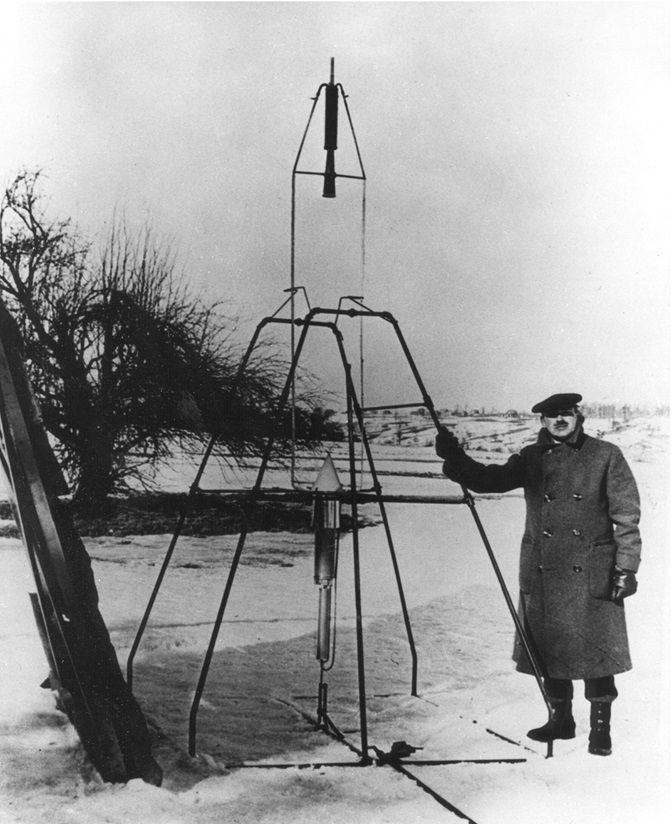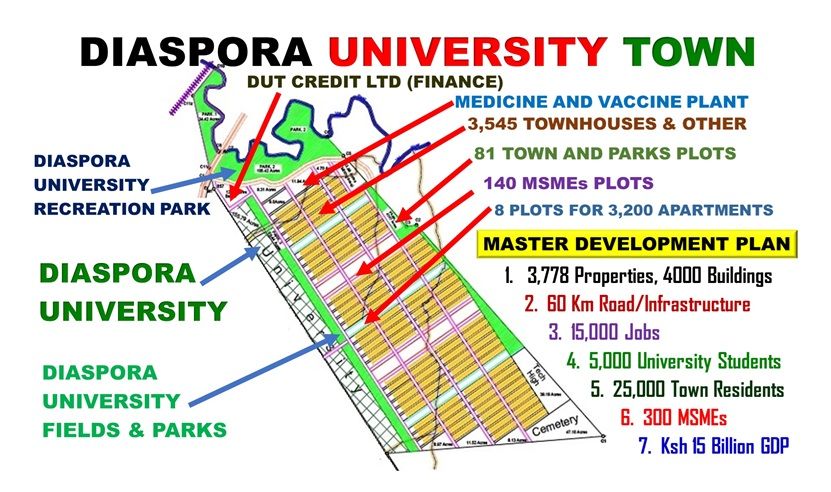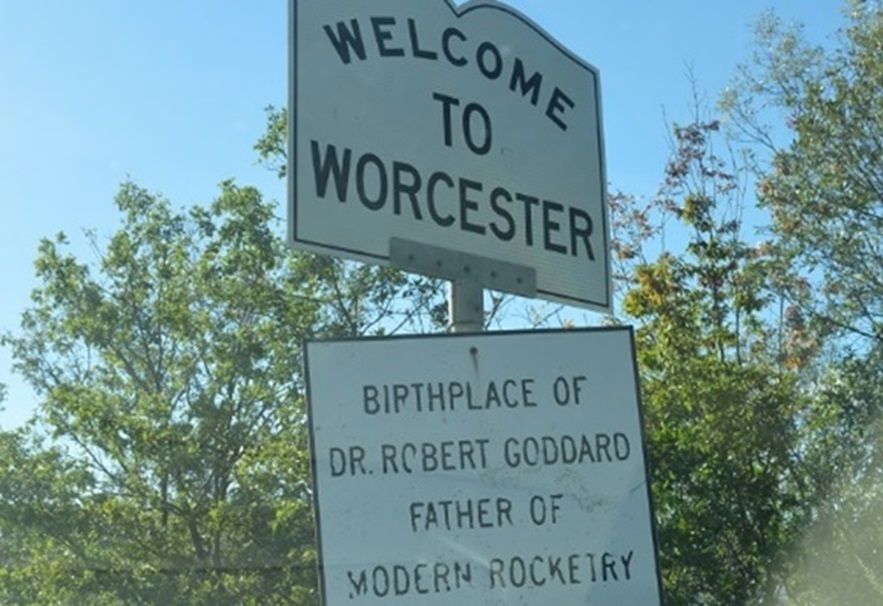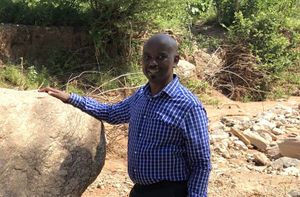At the age of 17 years, Robert Goddard would climb a tree. He would look to the sky and imagine making a device that can go to Mars. He is quoted saying, “I was a different boy when I descended from the tree from when I ascended. Existence at last seemed very purposive.” For 45 years, from that day, Goddard would progress the creation of a rocket. During the period Goddard would file 214 patents and launch 34 rockets. The rocket launches would travel as high as 2.6 km (1.6 miles) and reach speeds of 885 km/h (550 mph).

This story and the sign, “Birthplace of Dr. Robert Goddard Father of Modern Rocketry,” next to the “Welcome to Worcester City,” sign on highway 290 West kept inspiring what is now the Diaspora University Town (DUT) to keep moving forward. Every time I would drive on interstate highway 290, I would read the sign and be reminded that Dr. Goddard put in 45 years of innovation and persistence.
Dr. Goddard is quoted saying, ”It is difficult to say what is impossible, for the dream of yesterday is the hope of today and the reality of tomorrow." 69 years later the idea that he started evolved to a rocket that went to the moon.
The Diaspora University idea started in Worcester City and at WPI University. The rocket started in Worcester City. The first rocket to shoot upward was at WPI where Dr. Goddard was a student.
Robert Goddard Story.
1882. Robert Goddard is born in the City of Worcester, MA, USA.
1899. On October 19, 1899 Robert Goddard, age 17 years, climbs a cherry tree to cut off dead limbs. He is transfixed by the sky as he imagines how wonderful it would be to make some device which had even the possibility of ascending to Mars. He starts the rocket invention and for the rest of his life observes a private commemoration October 19 as, “Anniversary Day.”
1907. Robert as a student of WPI does experiment on a rocket powered by gunpowder in the basement of the physics building. The experiment causes a fire in the building. He, however, is not expelled.
1914. Robert files the first two U.S. patents for his work.
1915. Robert when advancing his research theorizes that a rocket can work in a vacuum without pushing against air in order to fly. That in a vacuum, a rocket engine can produce thrust.
1919. Robert publishes the book: A Method of Reaching Extreme Altitudes. The book is about how rockets can be used to reach the moon. 1,000 copies are sold worldwide.
1920. New York Times editorial publishes a story with the headline: “Believes Rocket Can Reach Moon.” The newspaper editorial ridicules Robert’s theories. The paper writes that Prof. Dr. Robert Goddard does not know the relation of action and reaction, and of the need to have something better than a vacuum against which to react. The editorial states that he seems to lack the knowledge ladled out daily in high schools.
1924. Dr. Goddard publishes article, “How my speed rocket can propel itself in vacuum,” to try and stop the ridicule. No matter how hard he tries to explain his results, he is not understood.
Dr. Goddard successfully launches first liquid-fueled rocket in Auburn, MA. The rocket reaches a height of 41 feet at a speed of 60 mph that last 2 seconds. He funds this with his own money and private funders.
1929. After Dr. Goddard launches one of his rockets, a Worcester newspaper, then writes, “Moon rocket misses target by 238,799 miles.”
1930 – 1941. Dr. Goddard launches rockets in New Mexico. Progressively the rockets continue to achieve higher heights. One achieves a height as high as 2.6 km (1.6 miles) and a speed of 885 km/h (550 mph).
Dr. Goddard after examining a rocket discovered during the Second World War made in Germany determines rocket used his technology.
He passes on having filed 214 patents and launched 34 rockets in rocketry.
1951. A lawsuit is filed by Dr. Goddard’s wife, Esther, and financiers against the U.S. government for infringement of Goddard’s patents.
1960. Dr. Goddard, wife, Esther, is paid by the U.S. armed forces and NASA an award of $1 million (equivalent to about $8 million today.) The first rocket launches to space by NASA.
1969. Apollo 11 launched to the Moon.
The day after launch, New York Times prints a correction of its 1920 editorial, stating that “it is now definitely established that a rocket can function in a vacuum as well as in an atmosphere. The New York Times Editorial in 1969, 49 years later, states that it regrets the error made in 1920.
Dan Kamau, Diaspora University Town Executive Trustee and Project Director WhatsApp +254 743 203 168 Email dan@dut.or.ke






